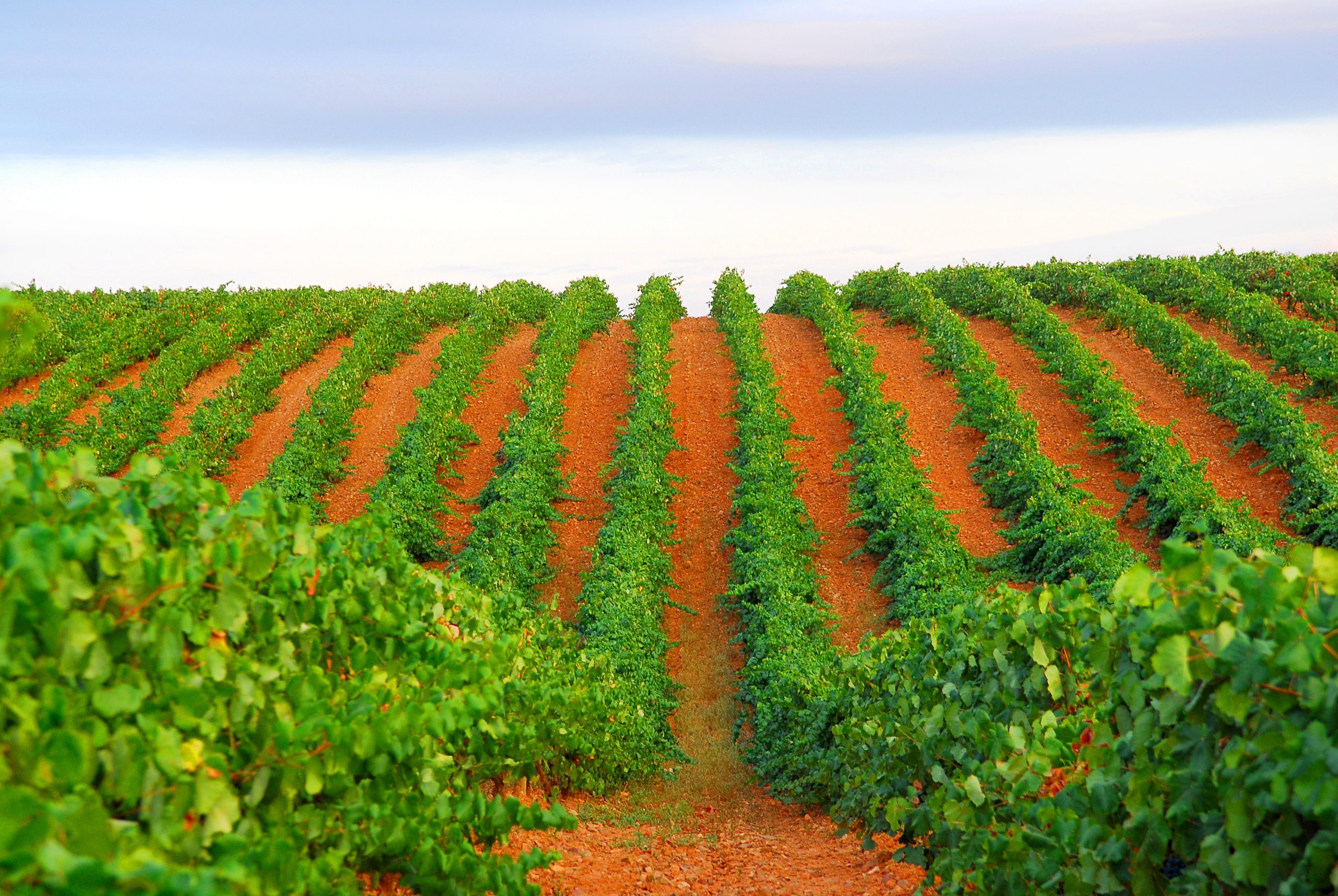Spain

Spain is home to more vines than any other country on Earth, with production only exceeded by France and Italy. Grape vines have been grown on the Iberian Peninsula since at least 3000B.C. and winemaking is confirmed to have been in practice since 1000B.C. As a country Spain offers breathtaking variations in landscape, history and culture.
Like many other European countries, Spain has administrative regions, seventeen ion total, called Commundades autónomas. All of which produce wine to some extent including the Balearic and Canary Islands. Although wine is produced all over the most significant and world reknown originate from, Andalucia; Sherry, Catalonia; Cava and Priorat, Castilla Y Leon; Rueda, Toro and Ribera del Deuro, Galicia; Ras Baixas and obviously, the most popular Rioja.
The geography and prevailing climate in each region are very much different to the next. This is the key factor to Spain’s ability to produce such a varied range of styles of wines. From cool, green Galicia and the snow-capped Pyrenees in the north, via the parched central plateau, to sandy, sunny Andalucia in the south, the Spanish landscape is very diverse. The country spans seven degrees of latitude (36°N to 43°N), 800km between its Atlantic and Mediterranean coasts. In-between these two very different coastlines are various mountain ranges, each of which has its own particular effect on the local landscape and climate. The Cordillera Cantábrica range, for example, creates dramatic contrasts between the lush, green land on its northern, Atlantic side and dry, dusty Castilla y Leon on its southern, inland side.
Most of the key regions and vineyards are planted near and around rivers. Rivers are not only a crucial water source but also they have an impact on the soils around and creating a favorable mesoclimate for growing vines for wine. The Miño, Duero, Tajo, Guadiana and Ebro are considered the key rivers. All but the Ebro follow westward towards Portugal and into the Atlantic, changing their name slightly to fit the Portugese language. The Ebro however flows eastward into the Mediterranean sea. On its course eastward the Ebro flows through Castilla Y Leon, El Pais Vasco, Navarra, Rijoa and Aragon.
The style of wine produced is highly depended on the climate and topography of each region. The cooler climate of the north and north-west, produces light, crisp white wines, most notable are those of Rias Baixas. Drier regions further inland produce mid to full- bodied fruit driven red wines, exemplified by Rijoa, Ribera del Duero and Bierzo. Regions on the Mediterranean coast often produce heavier reds like Jumilla, however higher altitude vineyards are able to produce fine and elegant wines notably, Spain’s traditional method sparkling wine; Cava. Although Sherry is mostly produced in coastal towns in the South of spain, it is more due to human intervention than climatic influences that determine the final style.
Although international varieties have a presence in Spain’s wine industry, like in Italy, several hundred of indigenous varieties make up the bulk of the production, both in quality and quantity. The key red varieties are Tempranillo, Bobal, Granacha and Monastrell. The leading white varieties are Airen, Viura, Palomina and Albarino.
Tempranillo, which has various regional synonyms (including Cencibel, Tinto Fino and Ull de Llebre) appears in both quality and quantity. It accounts for just over 20% of all Spanish vines, and features prominently in the country’s most prestigious wines (most obviously Rioja, Toro and Ribera del Duero). Bobal, although relatively unknown, covers an impressive 7% of the national vineyard area, mostly in eastern Spain around Valencia, Manchuela and particularly Utiel-Requena. Garnacha is valued here, as elsewhere, for its juicy, fruity character and high potential alcohol. It is put to good use in the deeply-colored rosés of Navarra, but is perhaps at its best when blended with the more-structured, darker-flavored Tempranillo. Monastrell.
Perhaps surprisingly, the most commonly planted variety of all is the little-known Airen. This is a high-yielding white-wine variety whose drought resistance wins it favor with growers, but whose grapes typically disappear into anonymous blends and brandy. Macabeo (or Viura as it is known in Rioja) is a main variety in both still wines and sparkling Cava. Palomino, although occasionally used in varietal table wines, is used almost exclusively for Sherry. Albarino is found almost exclusively in the north-west, and owes its growing popularity to the success of its most noted wine style, Rias Baixas.
‘International’ varieties such as Cabernet Sauvignon, Syrah, Chardonnay and Sauvignon Blanc are becoming more and more popular in Spain, and their plantings are rising in various Spanish regions. Along with the most popular varieties, there are regional specialties, such as Hondarrabi Zuri in the Basque Country, Marmajuelo in the Canary Islands and Zalema in Andalucia.
Spain’s wine industry has remained traditional for many years, due to social and political factors, and only in recent decades has the industry started modernizing and injecting considerable amount of investment. This modernization in vineyard and winery has been reflected in the offices of government, the country’s wine-classification system has been worked on extensively in the past 20 years.
In general, Spain still offers great value for money. Quality is on the rise with many producers, making Spainish wines one of the main competitors in the global scene. The export market is now of prime importance, not least because the domestic market is shrinking as Spain’s wine consumption per capita continues to fall year on year. Strong global demand for premium red wines shows promise for the likes of Rioja, Ribera del Duero and Priorat, but quite how traditional, less-mainstream styles such as Sherry and Getariako Txakolina will fare in the next few decades will be a point of interest.


